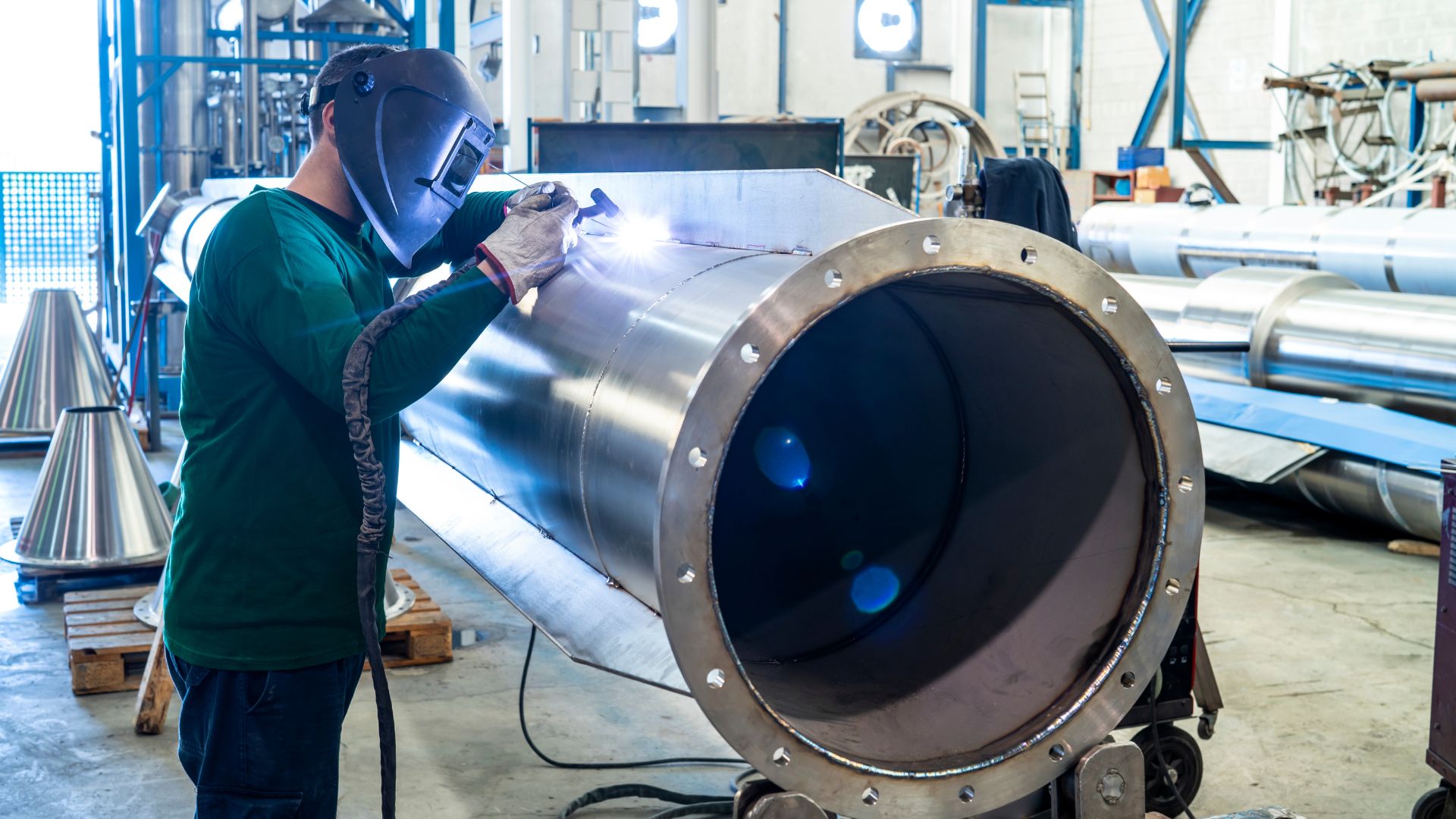Welding is a fundamental process in the shipbuilding industry, playing a crucial role in the construction and maintenance of ships. The strength, durability, and safety of a vessel heavily depend on the quality of the welding work performed during its construction and throughout its operational life. This article explores the significance of welding in the shipbuilding industry, highlighting its role in ship construction and repair.
The Role of Welding in Ship Construction
- Structurele integriteit
Welding is essential for ensuring the structural integrity of a ship. The hull, which forms the main body of the vessel, is constructed from large steel plates and sections that must be securely joined. High-quality welds are vital to maintain the vessel’s strength and ability to withstand harsh marine environments.
- Hull Construction: The hull is composed of numerous steel plates welded together to form a watertight structure. The quality of these welds determines the ship’s ability to handle stress and avoid leaks.
- Internal Framework: Inside the hull, a network of beams, girders, and bulkheads provides additional support. Welding these components ensures they work together to distribute loads and enhance the ship’s stability.
- Assembly of Sub-Assemblies
Modern shipbuilding often involves the construction of sub-assemblies, which are sections of the ship built separately before being joined together. This modular approach improves efficiency and allows for better quality control.
- Precision Welding: Each sub-assembly must be precisely welded to fit seamlessly with the others. Any misalignment or poor-quality welds can lead to structural weaknesses.
- Large-Scale Assembly: Welding is crucial during the final assembly stage, where large sections such as the hull, deck, and superstructure are brought together. This process requires highly skilled welders to ensure the sections align correctly and the welds are strong and reliable.
- Integration of Systems
Ships are complex structures that incorporate various systems, including plumbing, electrical, and HVAC (heating, ventilation, and air conditioning). Welding is essential for installing these systems securely and efficiently.
- Piping Systems: Welded joints are used extensively in the ship’s piping systems, which transport water, fuel, and other fluids. These welds must be leak-proof and able to withstand high pressure and corrosive environments.
- Electrical Systems: Cable trays and supports are often welded to the ship’s structure to ensure the stability and protection of electrical wiring.
The Role of Welding in Ship Repair
- Hull Repairs
The hull is the most critical part of a ship that requires regular inspection and maintenance. Welding plays a vital role in repairing hull damage caused by collisions, corrosion, or wear and tear.
- Patch Welding: Damaged sections of the hull can be cut out and replaced with new steel plates. These patches are welded into place, restoring the hull’s integrity.
- Onderwater lassen: For ships that cannot be dry-docked, underwater welding techniques are used to repair hull damage while the vessel remains afloat.
- Structural Modifications
Welding is often required for structural modifications during a ship’s operational life, such as lengthening the vessel, adding new sections, or modifying the superstructure.
- Extensions and Retrofits: Welders add new sections to the ship or retrofit existing ones to accommodate changes in operational requirements. This process demands precise welding to ensure the new sections integrate seamlessly with the original structure.
- Reinforcements: Additional supports and reinforcements may be welded to enhance the ship’s strength, especially if it is being repurposed or upgraded.
- Maintenance of Mechanical Systems
The ship’s mechanical systems, including engines, turbines, and boilers, require regular maintenance and repair. Welding is crucial for fixing or replacing components in these systems.
- Engine Repairs: Welding is used to repair or replace damaged parts of the ship’s engine, such as cracked engine blocks or broken mounting brackets.
- Pipe and Duct Repairs: Welders repair leaks and replace corroded sections of the ship’s piping and duct systems to ensure efficient operation.
Challenges and Solutions in Ship Welding
Welding in the shipbuilding industry presents several challenges that must be addressed to ensure high-quality results.
- Environmental Conditions
Shipyards often operate in challenging environmental conditions, including high humidity, saltwater exposure, and extreme temperatures. These factors can affect welding quality and the durability of welds.
- Protective Measures: Using protective enclosures and preheating techniques can mitigate the adverse effects of the environment on welding operations.
- Corrosion-Resistant Materials: Employing materials and coatings resistant to corrosion helps extend the life of welds in harsh marine environments.
- Skilled Labor Shortage
There is a growing demand for skilled welders in the shipbuilding industry. The shortage of qualified welders can impact the quality and efficiency of ship construction and repair projects.
- Training Programs: Investing in comprehensive training programs for welders ensures they have the necessary skills and knowledge to perform high-quality work.
- Automation: Implementing automated welding systems can help alleviate the labor shortage by increasing productivity and consistency.
Conclusie
Welding is an indispensable part of the shipbuilding industry, playing a crucial role in both the construction and repair of ships. It ensures the structural integrity, safety, and longevity of vessels, making it essential for maintaining the maritime fleet. Despite the challenges, advancements in welding technology and techniques continue to enhance the efficiency and quality of ship welding operations. As the industry evolves, the importance of skilled welders and innovative welding solutions will remain at the forefront of shipbuilding and repair, ensuring the continued growth and success of the maritime sector.

